Between God and the Cosmos: London-Based French Artist Leyman Lahcine’s Life in Objects
By Adam CoghlanAcross a walkway from Tottenham Hotspur’s giant London stadium, in a small third floor room of the old townhouse that houses the Sarabande Foundation, Leyman Lahcine is thumbing through some of his old sketchbooks. Ambient sounds from an old episode of Alex Rita’s NTS show tinkle in the background, while the minty-sweet legacy of palo santo and dried oil paint lingers in the close air.
He shows me a tuning fork and taps it. “I think I like this idea of harmony,” he says after a while, with a grin that seems to escape nervously from the side of his face. “It’s peace.”
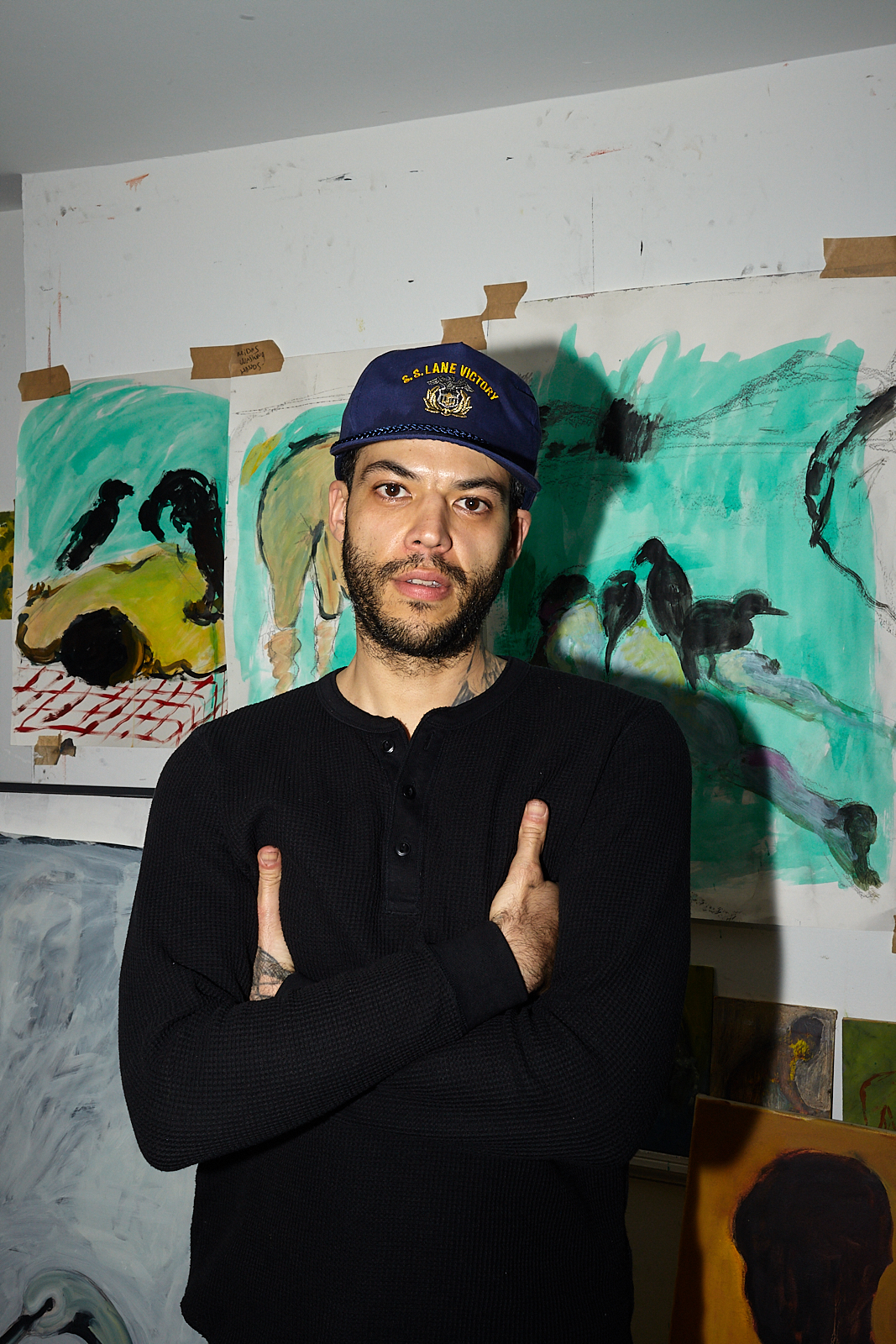
Lahcine is always curious: through his art, his reading and even just when conversing, he is trying to find meaning. Not out of desperation, but an unceasing want to understand more; constantly working to untangle ideas around meditation, love and equilibrium in what seems like a bid to identify and capture the essence of happiness. It has taken him on a journey from his hometown Grenoble, where he was born in the late 1980s to Algerian parents, to New York where he freewheeled in fashion for six years, and to London, the city he’s called home since 2014. Since 2023, he’s been in residence at the Sarabande Foundation and is currently studying to teach creative practices in higher education.
Here, in his own words, he tells us about the things that help him find his meaning – from tuning forks to notepads, stories about cats, and his favourite graphite pencil.
Leyman Lahcine’s life in objects:


528Hz tuning fork

I picked this because it’s quite a nice looking object, but also if you if you tap it, then you create this frequency. And then you can feel already your focus changes; it changes the energy instantly, doesn’t it? It reminds me of harmony.
You know that word harmony? It’s a bit like when we talk about life and finding life balance.
I never really understood why balance was a good thing because it sort of implies that you you remove weight from one end or you add weight from one end in order to find the equilibrium. So it’s like adding or removing an aspect of your life in order to find equilibrium.
Harmony is a lot more accurate word to me because I think it’s not about adding or removing, it’s about finding or tuning all the elements that you’ve got in your life in order to find a flow that works for you. So I think I like this idea of harmony.
I do this before bed with the kids and they stop shouting – it makes them really peaceful. Yeah. This is so good. I love this. I love playing with it.
Phone
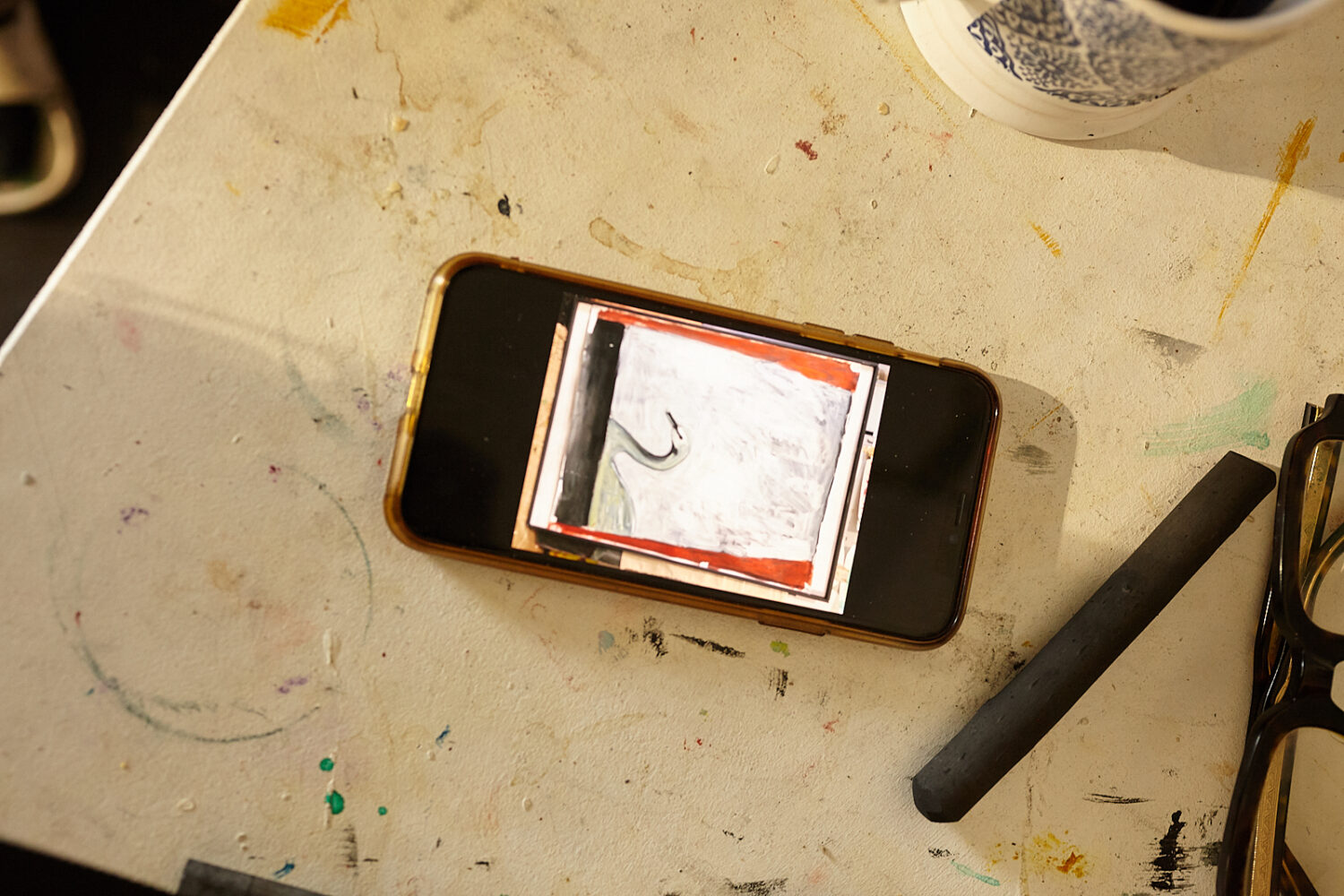
I think this was an obvious one for me, because it’s a love-hate relationship, isn’t it? I think about the fact that the majority of people that will come across my work will find it through digital media. It’s only a small percentage of people that will get the chance to experience the work physically. So I’m always photographing the work to see what it looks like on the phone. Most of the time, it doesn’t get captured well, but I’m always trying to make sure it gets captured. I don’t know if I should do that or not. But I also always photograph the process. When I start when I get to a point where I’m like ‘okay, I’m gonna leave it for today’, I take a picture and then when I’m at home I study it, I look at it, and think about it – and then sometimes I’d kill it. So I paint with my phone and work out colour composition and stuff instead of painting it and ruining it. I work through my phone.
I also think it’s quite important to be able to to detach yourself from the artwork. The more you attach yourself to a piece of work the less likely you are to evolve.
Little books of drawings and stories
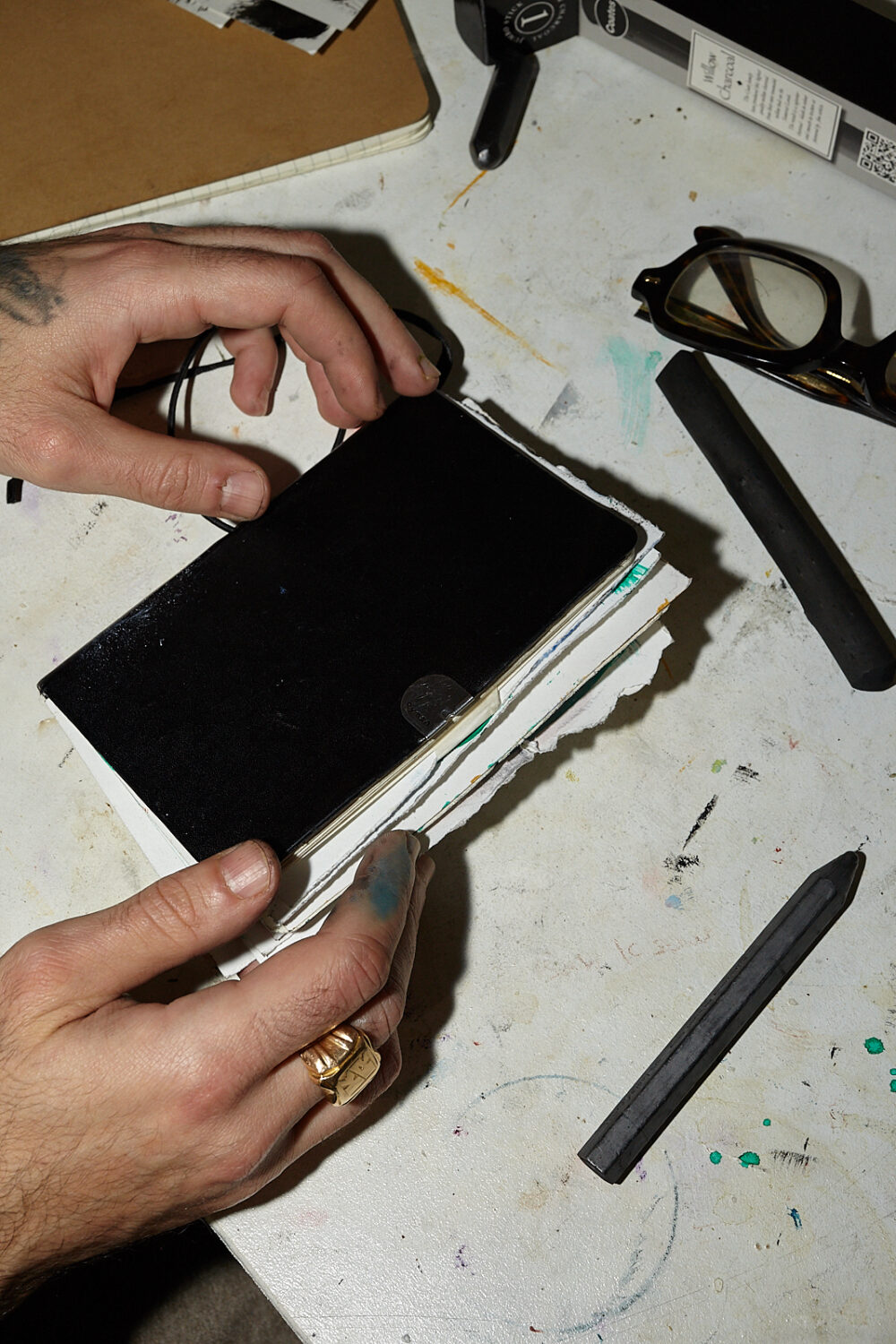
I go out and draw and paint, often in the Walthamstow wetlands, which is 10 minutes from the studio and 10 minutes from my house. I always have my sketchbook. I often spend time and there is no one: just the sun – and it doesn’t feel like you’re in London.
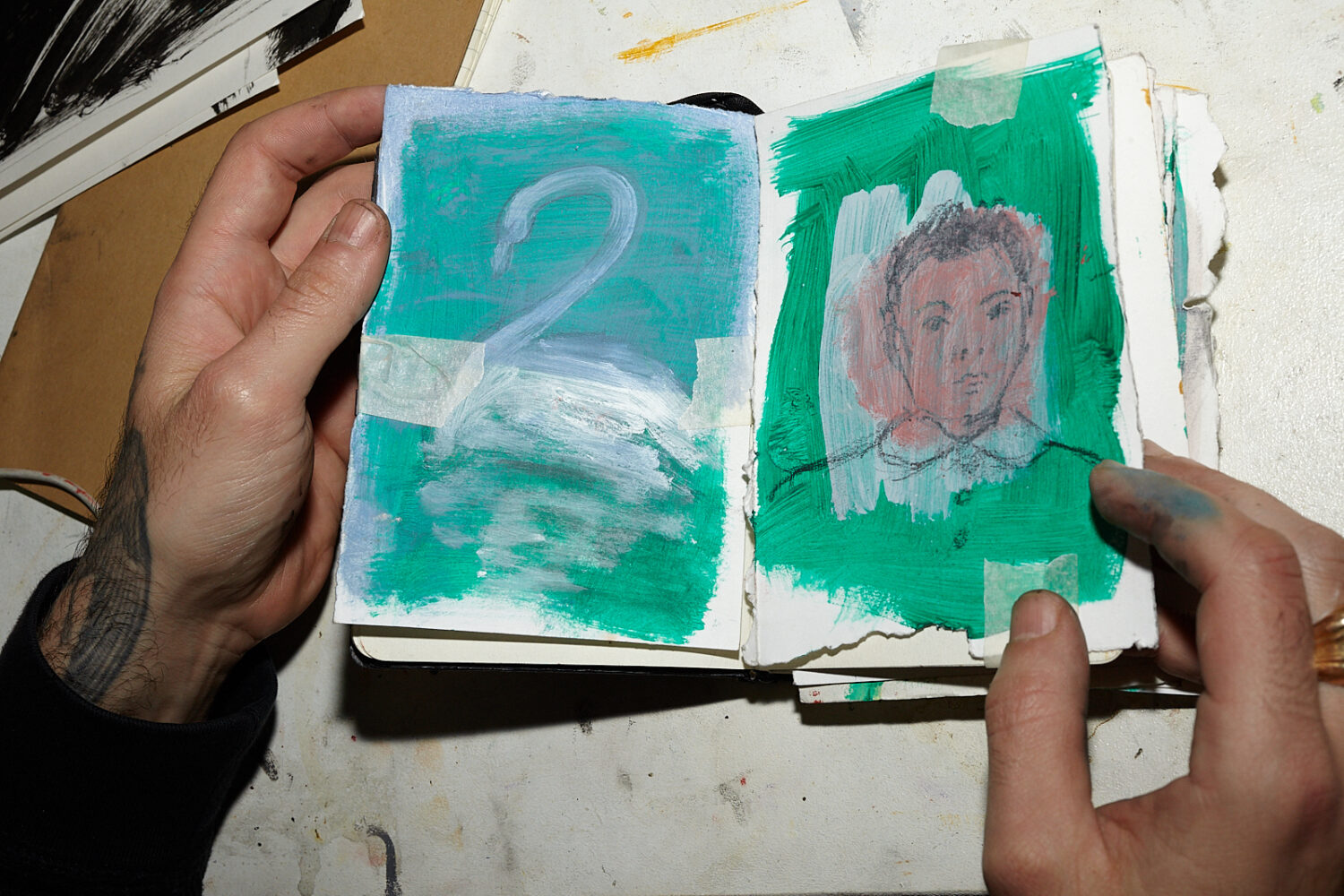
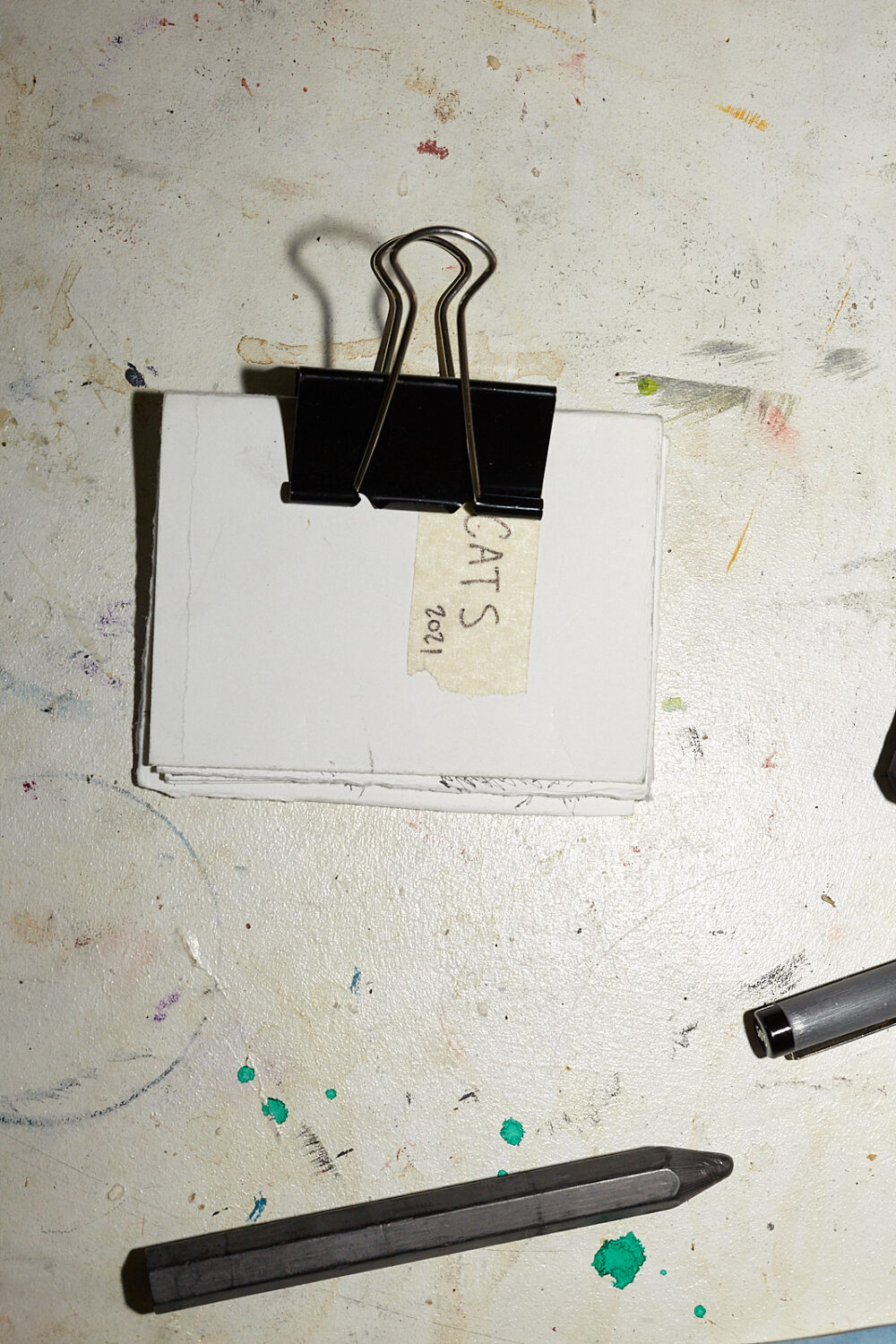
And then I often do little books of drawings and stories like this one which I did when I was still living in Clapton, in 2021, just as lockdown was lifted and there wasn’t much to do. This was about the cats in the streets. I’ve learned so much about cats: I looked at all these cats and then went around the streets to draw them every day. They’ve got territories which they don’t cross – and they each know this. They respect each other’s territory, but there’s also this neutral area that doesn’t belong to anyone.
Book, given to me by my mother for my birthday

This book was given to me by my mom on my birthday, but I don’t think she knew how good this book was. And it became a really important book for me – it’s sort of like a spiritual guide or some book where I can always go to to find answer when I feel a bit lost. Between God and the Cosmos – It’s a conversation between Christian theologian Raimon Panikkar and Gwendoline Jarczyk, a philosopher, a conversation about God and humanity – answering existential questions around life, death, time, space, and where we sit as individuals against the background of humanity, of good and evil. I always have it in my bag wherever I go and I’ve read it three or four times already.
Sometimes you feel a bit shit about life … I feel like this book gave me so much perspective and answers, thinking about the bigger picture … I don’t know. I really don’t know. I love this book so much.
Wooden chair
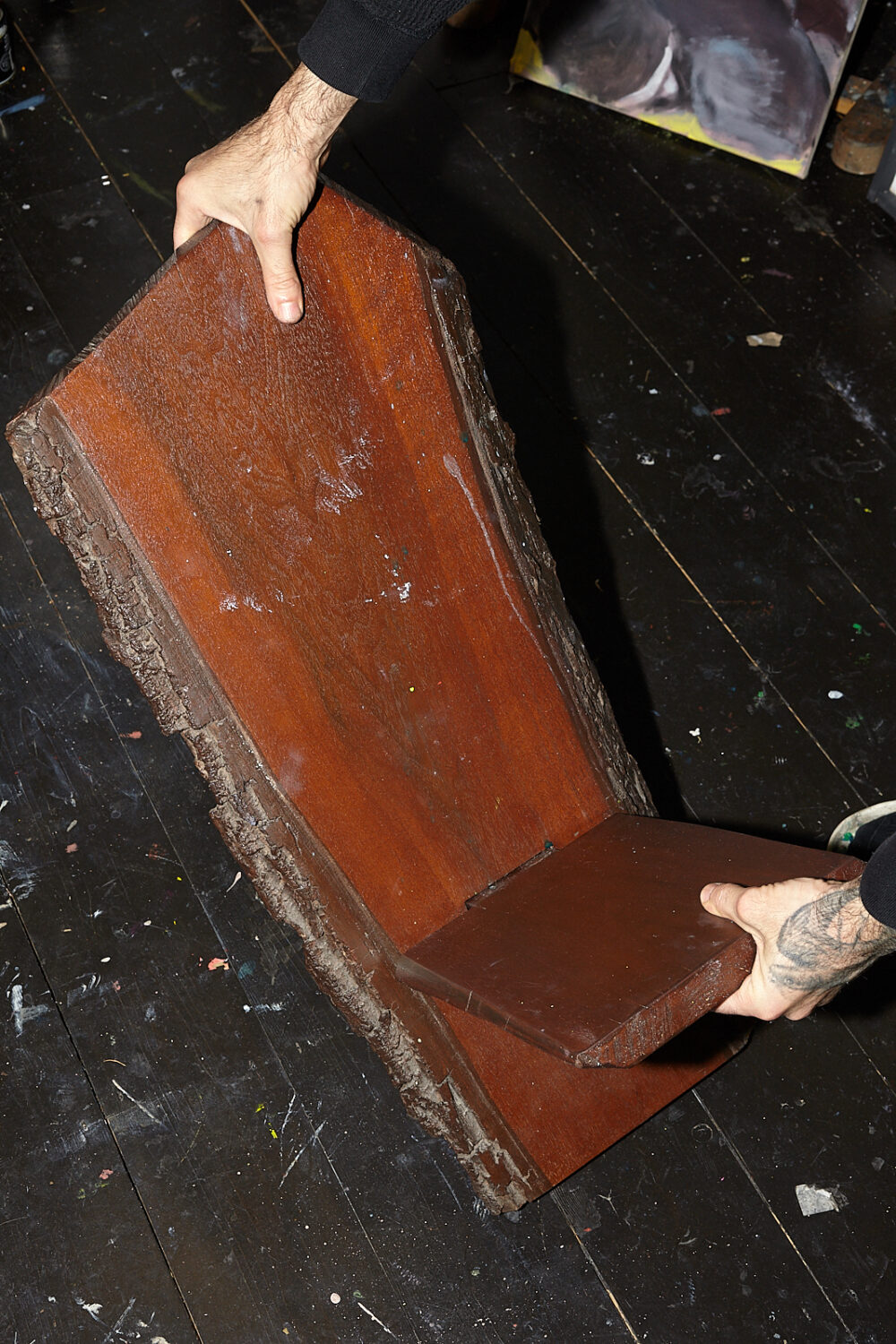
I really wanted a chair for the studio so I got these two pieces of wood from a place up near Blackhorse Road. I knew I wanted to do it in this style, like a really ancient design, which you find in different cultures in Eastern Europe, Eastern Africa, and North Africa. So it’s simple, a really common design. I wanted something that can just [detach the two pieces and] fold away.
I wanted a chair that I could just sit in, look at my work and then just relax. It’s something that looks a bit nice, as well.
I love the idea of making things but I’m really bad at making things. I wish I could make stuff. It would be so nice to make like a cabinet or fucking beautiful table or chair. Yes. Yeah, that’s a good place to start.
Graphite 9B
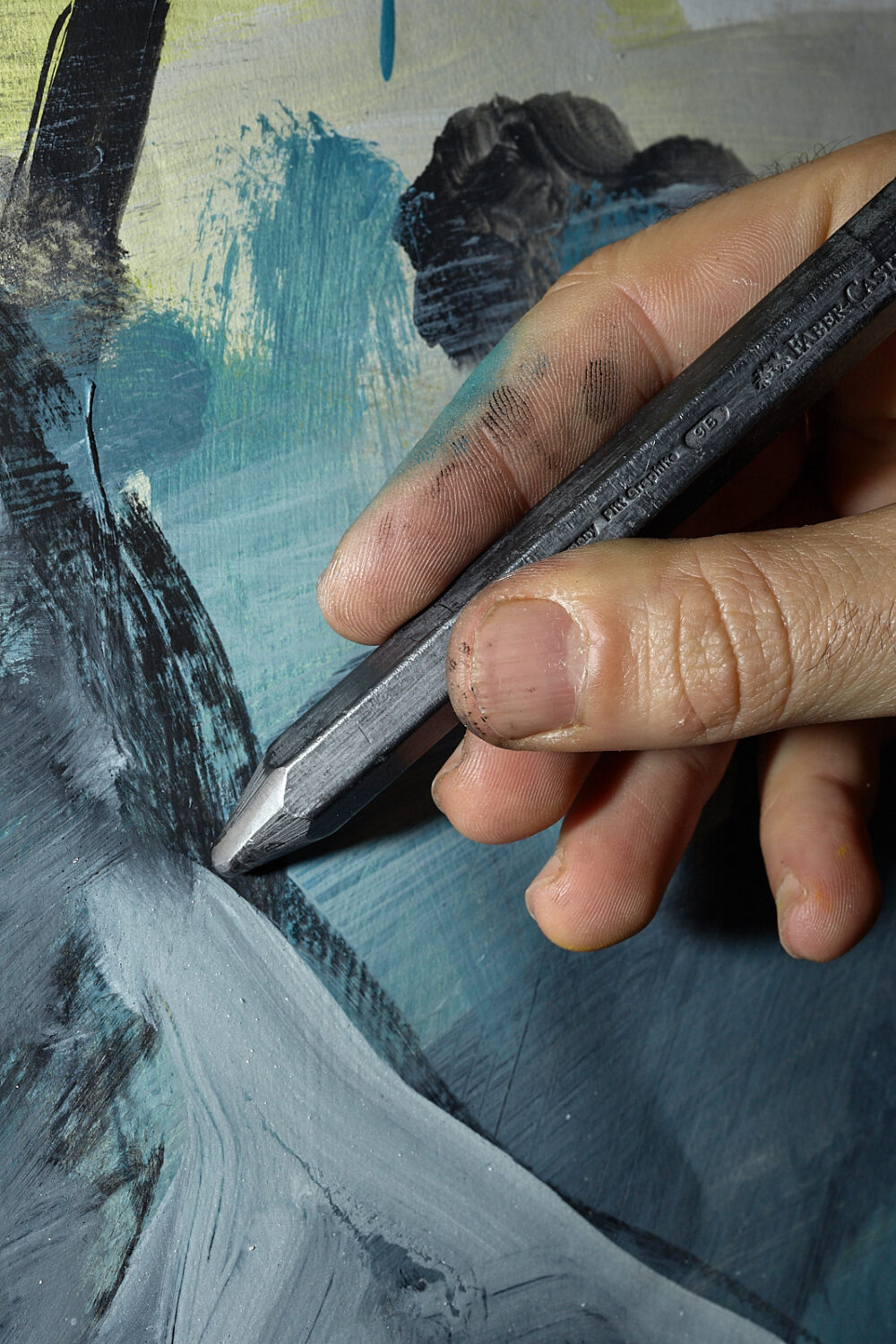
I’m always drawing, but I’m not really good at drawing. I don’t like fine drawing; I like larger-scale drawing so that’s why I needed something that feels substantial in my hand – I draw a lot to workout compositions and even movements. I need to repeat the drawing multiple times to know what it will feel like on the canvas.
So for the composition, I do it multiple times and work out the composition and often I find that the drawing doesn’t really translate as a painting. But also I don’t see the hierarchy between the drawing and the painting; for me, it’s the same thing. Drawings are not as valuable as paintings, so it was about removing that hierarchy.
Which led me to then paint on paper. This idea of the hierarchy of the medium and surface … painting on canvas comes with pressure because it comes with a lot of historical weight, and you tend to be a bit more precious when you paint on canvas. But when you paint on paper, you remove that hierarchy and I find myself being a lot more free painting on paper. But it started for me drawing large scale with this graphite and then painting them. Then that’s what I ended up showing [earlier this year]; I didn’t show a lot of the paintings on canvas in my last solo show; I showed a lot of paintings on paper instead.
Masks

These masks are made out of plastic, which comes in granules which you have to mix in hot water which then becomes really soft – a bit like clay. You’ve then got a certain amount of time to mould it before it becomes hard. I made so many masks and little figurines that have been painted. And I would sort of use it as currency: for exchange, for services, or swap it for things like artworks.
I liked the idea of playing with plastic or doing something with thermoplastic and at first I used thermo plastic sheets but it didn’t feel free enough. And I found this: I just made more and more and people would come to my studio, to the house and they liked them. I think it’s something about the size of them, it’s as if it’s made to exchange.
All photography by Michaël Protin. This interview has been edited for clarity.